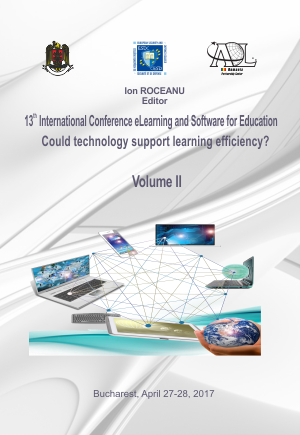PATHWAYS FOR POSITIVE SOCIAL IMPACTS THROUGH DESIGNING COMMUNICATION STRATEGY AND TOOLS WITHIN ELEARNING PROJECTS
PATHWAYS FOR POSITIVE SOCIAL IMPACTS THROUGH DESIGNING COMMUNICATION STRATEGY AND TOOLS WITHIN ELEARNING PROJECTS
Author(s): Andreea Ogrezeanu, Anca Alexandra Purcarea, Andrei OgrezeanuSubject(s): Social Sciences
Published by: Carol I National Defence University Publishing House
Keywords: Social Impact; Communication Strategy; Communication Plan; Communication Tools; eLearning; Online Communication.
Summary/Abstract: The abundance of eLearning projects requires an integrated design for the communication strategy for such projects. The technological changes need to be reflected within the communication strategy and communication tools used within these projects. Inappropriately designed communication strategy could be an important generator of risks for the project, dissatisfaction for the target group (clients targeted by the eLearning project), dysfunctionalities within the project’s team, resource waste, and others similar to these. Designing communication strategy and tools is contributing to the social impact of the project in which they are used. Both extremes, allocating too many or insufficient resources to communication within eLearning projects has its own pitfalls. This paper is aiming to tackle into some of the important aspects regarding the efficient design for the communication strategy and tools. Some of the questions aiming to be answered by this paper are: what should the communication strategy for an eLearning project entail? How communication strategy and tools are linked with the social impact generated by that respective project? How detailed the communication planning should be? Who should be addressed by communication within an eLearning project? Which are the tools due to be used for communicating within an eLearning project distinguished by the phase of the project? The theoretical distinctions tackled here will be illustrated by a case study, referring to a nationwide strategic eLearning project, co-financed by the European Social Fund (ESF) and the Romanian Government, under the Sectorial Operational Programme Human Resource Development (SOP HRD) in Romania. The project was implemented in partnership by the following organizations: University “Politehnica” in Bucharest (partnership leader), the Technical University “Gheorghe Asachi” in Iasi (the first two technical universities from Romania accredited for research and advanced education), Pythia International (a technical and management consultancy company in Bucharest), and CSI Piedmonte (a public consortium in Torino, Italy, specialized in IT for public administration). The main outcome of the eProf project is a number of 2000 secondary education (ISCED 2-3) teachers who graduated the training program, using interactive methods of eLearning. Communication strategy, planning and other communication tools where designed and used throughout the entire duration of the project for managing the communication with the teachers targeted by the training program provided by this project.
Journal: Conference proceedings of »eLearning and Software for Education« (eLSE)
- Issue Year: 13/2017
- Issue No: 02
- Page Range: 585-592
- Page Count: 8
- Language: English

